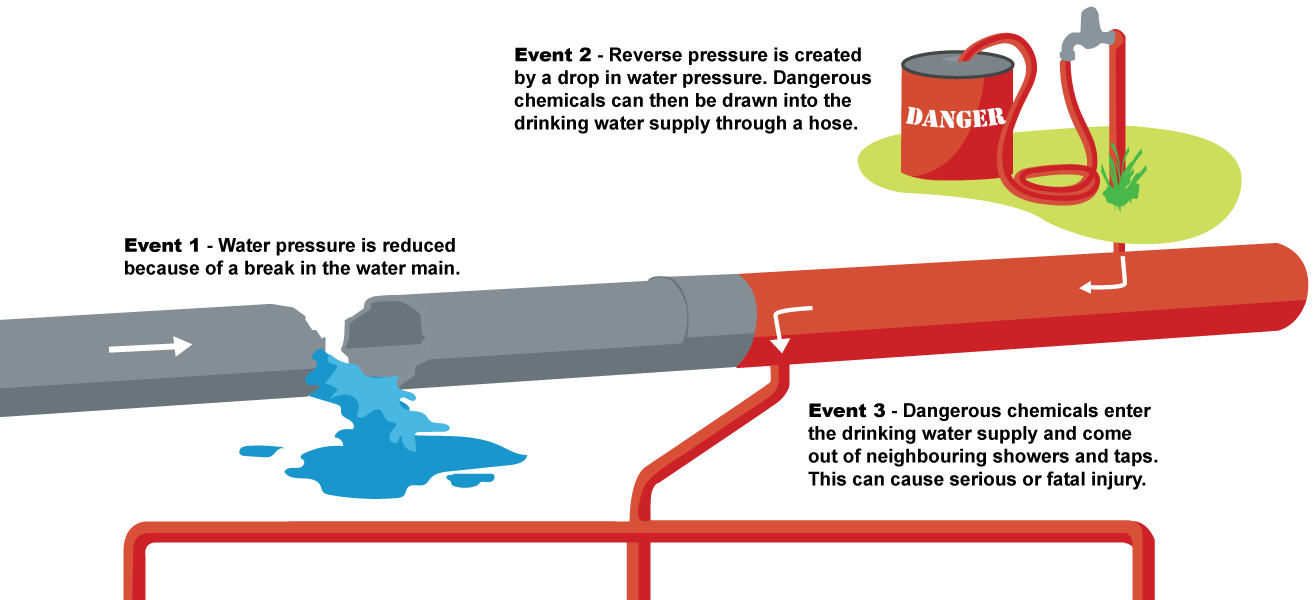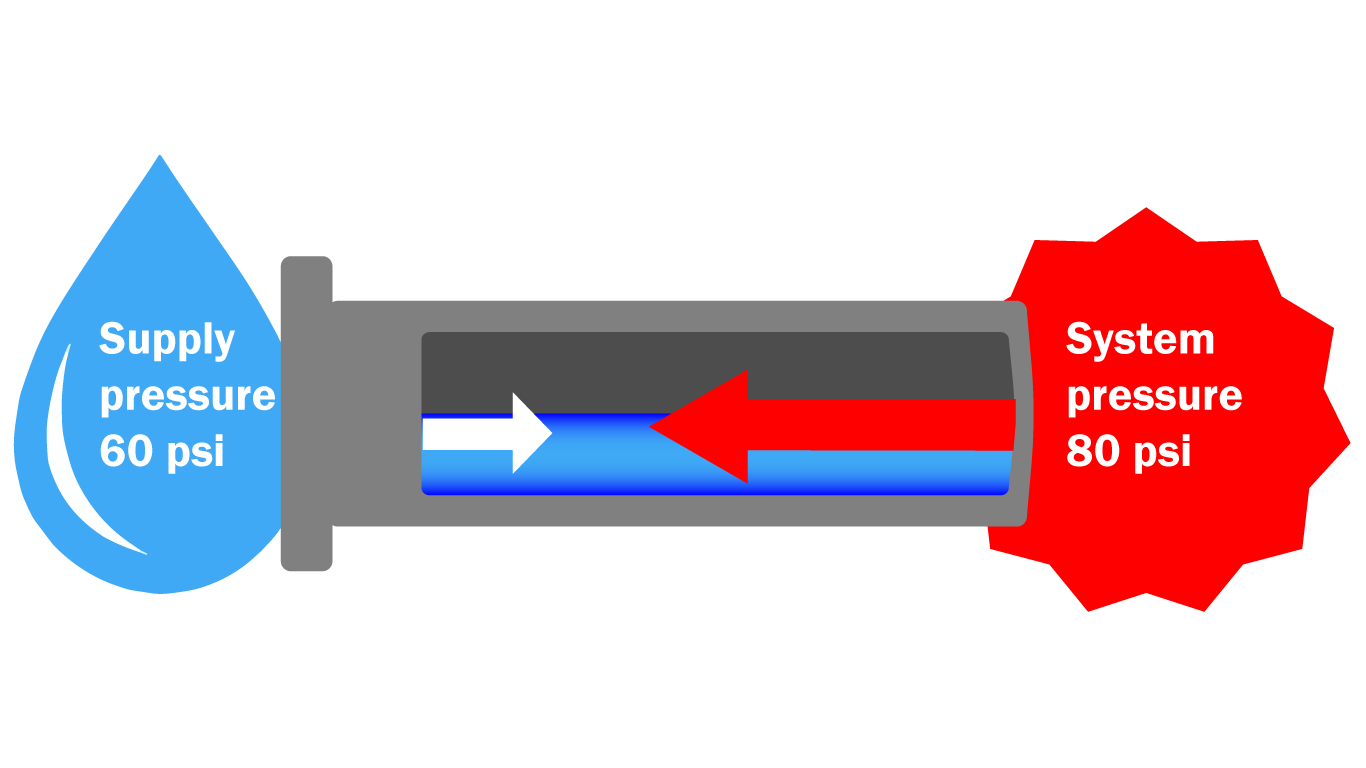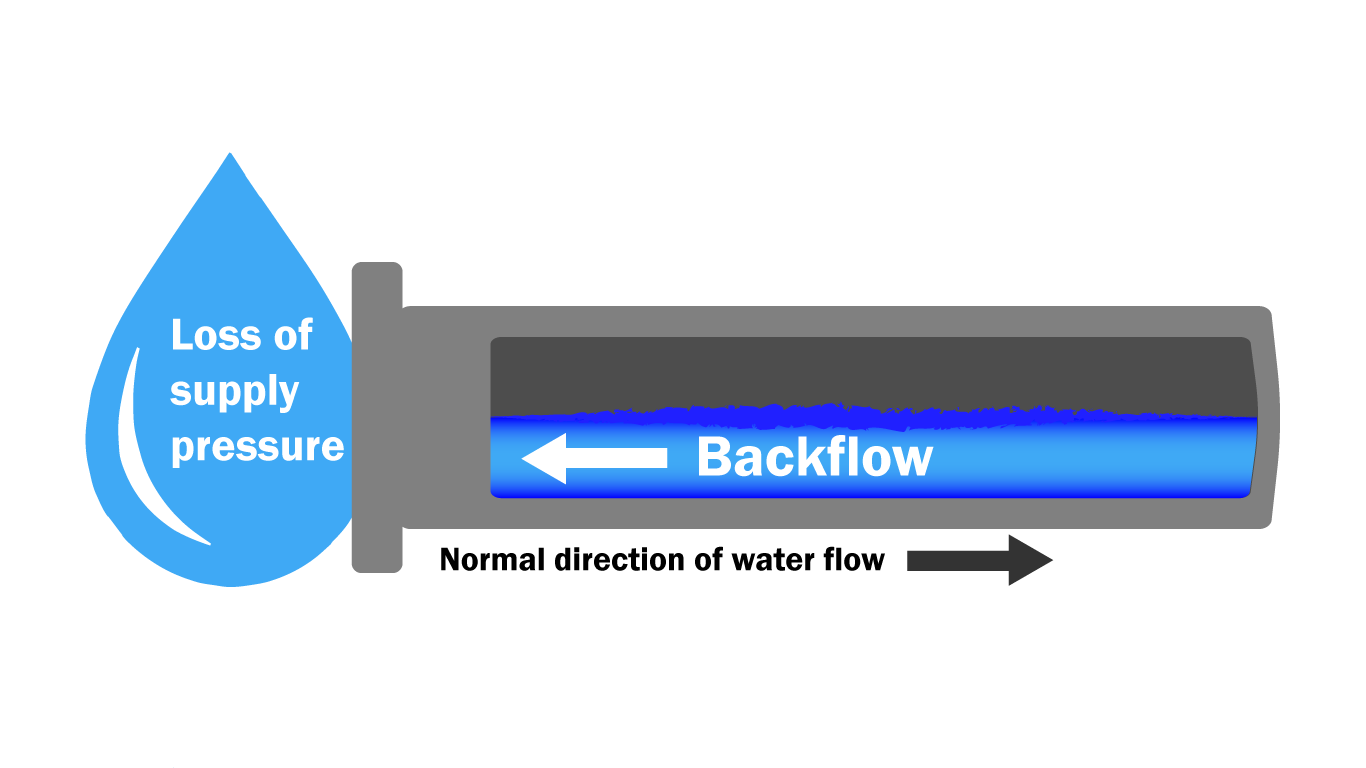What is backflow testing important for?
Welcome to BSI Online’s Backflow Academy, where we prioritize safeguarding public health, ensuring regulatory compliance, and maintaining the integrity of water systems. As a leader in the field of backflow prevention, we understand the critical importance of backflow testing in protecting communities from water contamination and infrastructure damage.
What is Backflow?
Typically, water will flow from the public water supply to the consumer’s plumbing distribution system. Backflow is the undesirable reversal of this flow of water and undesirable substances from the non-potable source to the potable source.
What is Cross-connection?
A cross-connection is any actual or potential connection between the public or consumer’s potable water system and any non-potable source or substance that present a hazard to the quality of the public or consumer’s potable water system. Therefore, cross-connection control is the management or “control” of these cross-connections to protect public safety by preventing backflow incidents within the public or water consumer’s potable water system.
How are cross-connections protected to prevent backflow incidents from occurring?
Ensuring the prevention of backflow incidents is crucial for maintaining water safety standards. Protection against cross-connections relies on two primary methods: containment and isolation. The most effective strategy involves a balanced combination of both containment and isolation measures, working together seamlessly.
Containment safeguards are strategically placed at the consumer’s water service or meter. This robust defense system covers the entire facility, effectively shielding the public water supply from potential contaminants lurking within the consumer’s plumbing system. However, it’s essential to understand that containment measures focus solely on safeguarding against external cross-connections and may not address risks within the facility itself.
In contrast, isolation methods are deployed within the consumer’s facility. These proactive measures serve as internal safeguards, precisely identifying and isolating hazards at specific points of use. By doing so, isolation measures offer comprehensive protection to individuals within the facility, preventing the infiltration of contaminants or pollutants into their internal plumbing systems.

Are all backflow incidents the same?
No, depending on the non-potable source or what the substance is, cross-connections are generally classified as high hazard or low hazard. Since there is no consensus, standards for defining and differentiating between a high and low hazard, each state (and on occasion the local public water supply) will define for themselves the criteria for each hazard. However, there is a commonality among the definitions.
What causes backflow incidents to occur?
Backflow incidents are caused by either backpressure or backsiphonage.
Backpressure
Backpressure is created when the pressure within the customer’s system becomes greater than the water supply pressure. Elevated tanks, heating systems and booster pumps are some of the main causes of backpressure.

Backsiphonage
Backsiphonage is created when there is a negative or reduced pressure in the water supply main. Water main breaks or hydrant flushing are two of the main causes of backsiphonage.

Backflow Assembly Testing FAQ
How to Prevent Backflow Incidents
Backflow prevention methods can be implemented either at the service meter, called containment protection, or at the point of water use at the fixture, called isolation protection. These backflow prevention methods can be divided into 4 basic categories – elimination, backflow devices, backflow assemblies, and air gap.
Who has responsibility for an approved and effective cross-connection control program?
EVERYONE!
The water purveyor, local plumbing authority, water consumers and all individuals performing backflow prevention assembly installation, testing and repairs have some level of responsibility for ensuring an effective cross-connection control program.
The individuals performing backflow prevention assembly installation, testing and repairs are responsible for following all codes and regulations as outlined by the local cross-connection control program. This should include the following:
The local plumbing authority is responsible for implementing and enforcing the local plumbing codes. The water consumer is responsible for preventing unprotected cross-connections and maintaining protected cross-connections within the water consumer’s facility. This should include the following:


